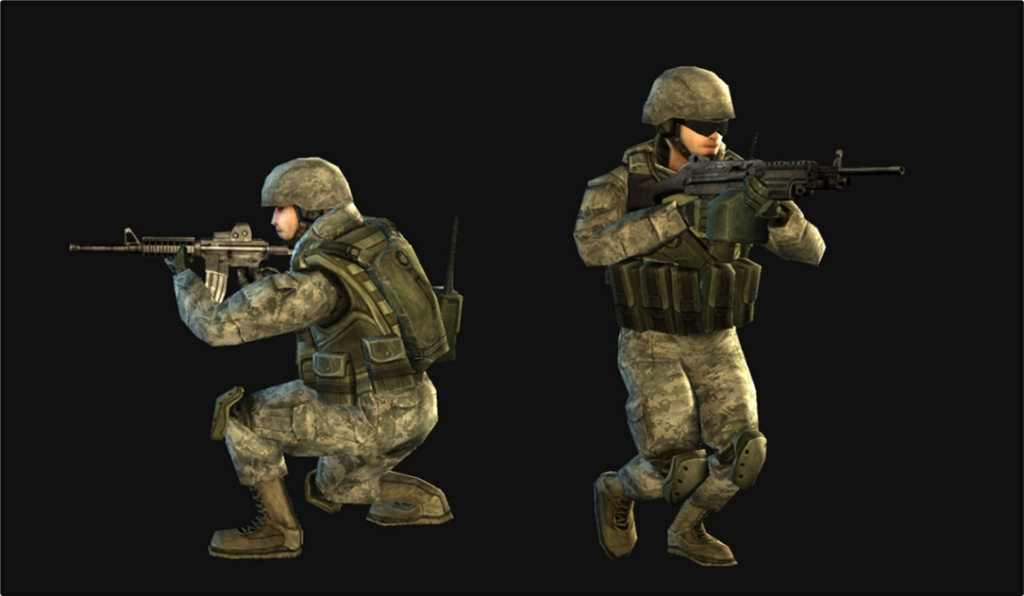Artificially intelligent (AI) agents are becoming progressively more prominent in virtual reality (VR) military training practices. These agents are systems that could perform different tasks in a virtual world. Moreover, in the context of VR training, they could serve as opponents or teammates to provide a more realistic training environment.
The AI agents in this final-year project were employed to provide artificial candidates in training to create a better understanding of combat situations, in particular for the benefit of the less experienced trainees. These agents could simulate behaviour of allied/enemy combatants in a battlefield and respond to the actions of the trainee soldiers accordingly.
In this project, two types of AI agents were created. The first type adopted finite-state machines and rule-based AI, whereas the second used reinforcement learning approaches aided by Unity’s machine learning (ML) agents toolkit. The first AI agent type was thus deterministic, meaning that it would always choose specific actions given specific circumstances. In time, the agent would become more predictable to users who encounter it, meaning that the scene in the VR space would feel more consistent. This is particularly relevant, as a sense of stability in these scenarios would be desirable for users still getting accustomed to the virtual form of training.
The second type of AI agents employed reinforcement learning or RL, which is an area of ML, to make decisions in the virtual environment. This form of learning required numerous trial-and-error interactions within the environment before it could be utilised as an ideal agent. Although using RL for AI agents would require large amounts of data and computational resources, and is often time-consuming to train, its primary advantage is that tends to be more flexible and dynamic. This means that decisions made will not always be simplistic and predictable, thus motivating users to attempt and try new strategies when dealing with the agent.
In utilising the above-mentioned two types of AI agents in VR training, users could benefit from more realistic training without being held back by real-life constraints or costs. Moreover, the advantages of virtually simulated training include: the possibility of training in environments that cannot be created easily in real-life, and the ability to train in a safer and more controlled environment. Another key benefit of using AI agents in conjunction with VR training is the reduction of costs and risks associated with traditional training methods. One tangible advantage in this respect would be the elimination of transportation and equipment costs.
While VR training is still a relatively new technology in military and police forces, it has shown potential in improving personnel readiness and effectiveness. Given the advancement of VR technology, it could be anticipated that this software would evolve into an even more valuable tool in the training of personnel, preparing them for the complex and ever-changing landscapes as necessary, to improve our safety and security.

Figure 1. Example of a virtual soldier agent
Student: Sean Cutajar
Supervisor: Prof. Matthew Montebello
